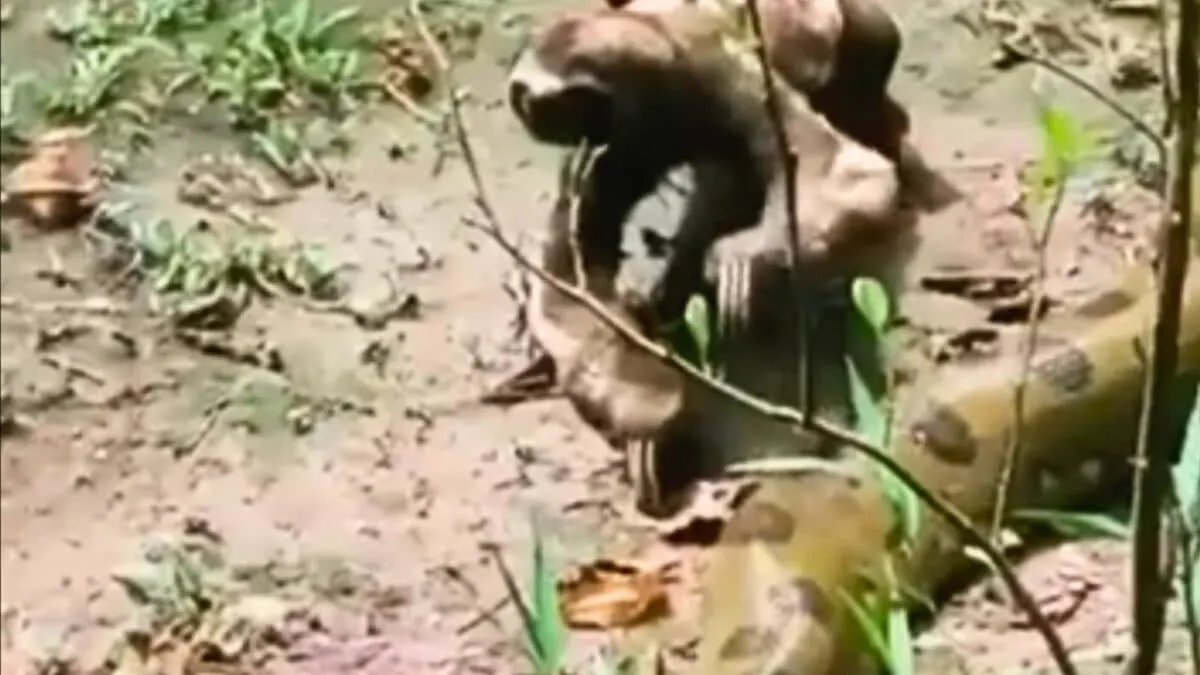Sloths are famous for their slow speed, while snakes are known for their speedy attacks. In spite of this, this sloth who crawls across an anaconda (one of the world’s largest snakes!) manages to get out of the situation alive.
Do you think the sloth realizes how much it was toying with its life?
Read to the end to watch the video!
Background
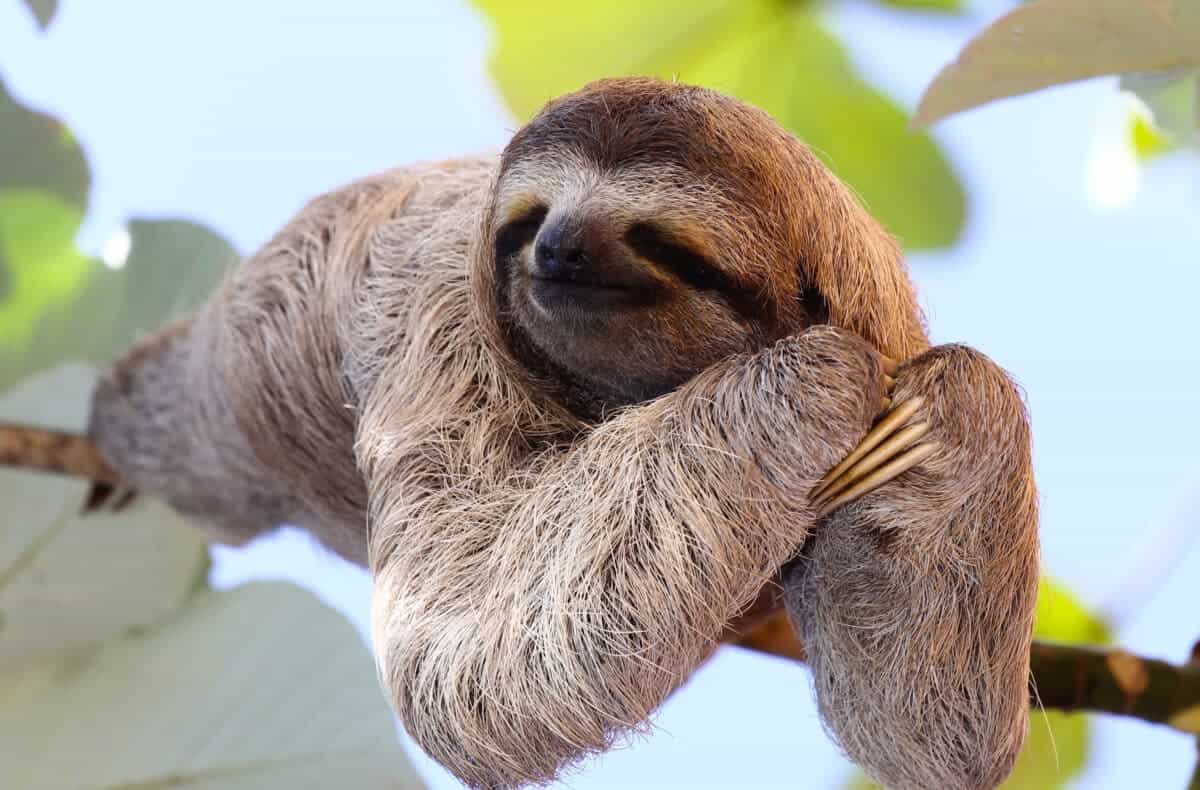
In the video we witness a sloth, with its characteristically slow movements, approaching a massive anaconda (basically in slow motion, of course.) The sloth, seemingly undeterred by the presence of one of the largest snake species in the world, crawls right over the reptile.
Surprisingly, the anaconda, known for its lethal constriction and formidable size, recoils instead of attacking. The story has a happy ending, but keep us on the edge of our seats nonetheless.
What Kind of Snakes Eat Sloths?
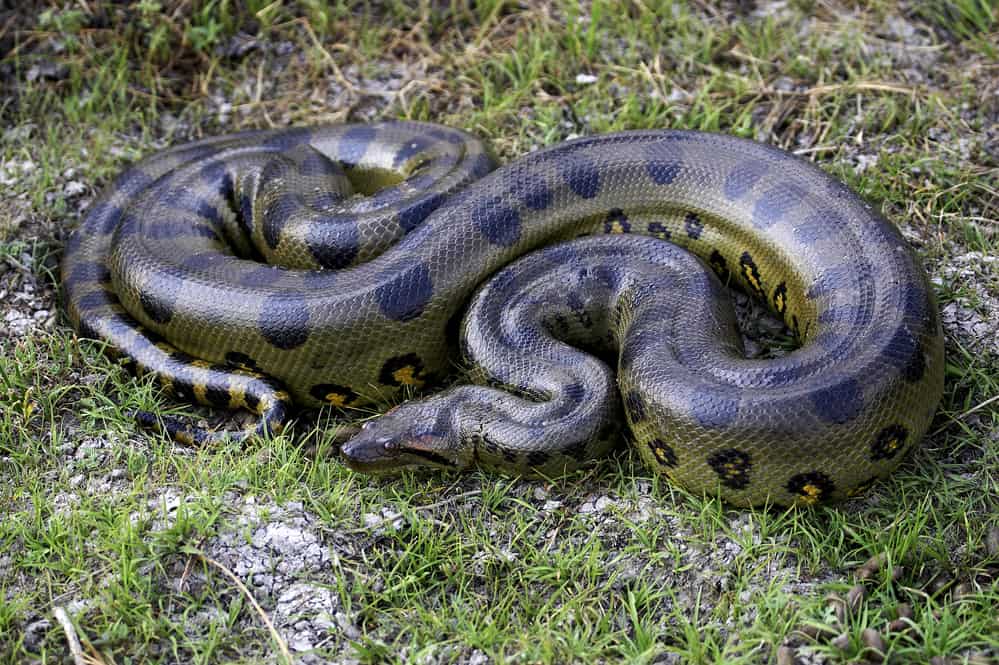
Anacondas, belonging to the boa family, are known for their immense size and strength. Boa constrictors can exert a constriction pressure of 6 to 12 pounds per square inch (psi), which is strong enough to stop the circulation of their prey and cause death!
However, sloths are not typical prey for anacondas. These snakes, primarily found in South America, usually hunt aquatic or semi-aquatic animals like fish, caimans, and occasionally larger mammals.
Predators of sloths are more often harpy eagles or jaguars, as they live in the tree tops just like sloths.
What Is the Biggest Killer of Sloths?
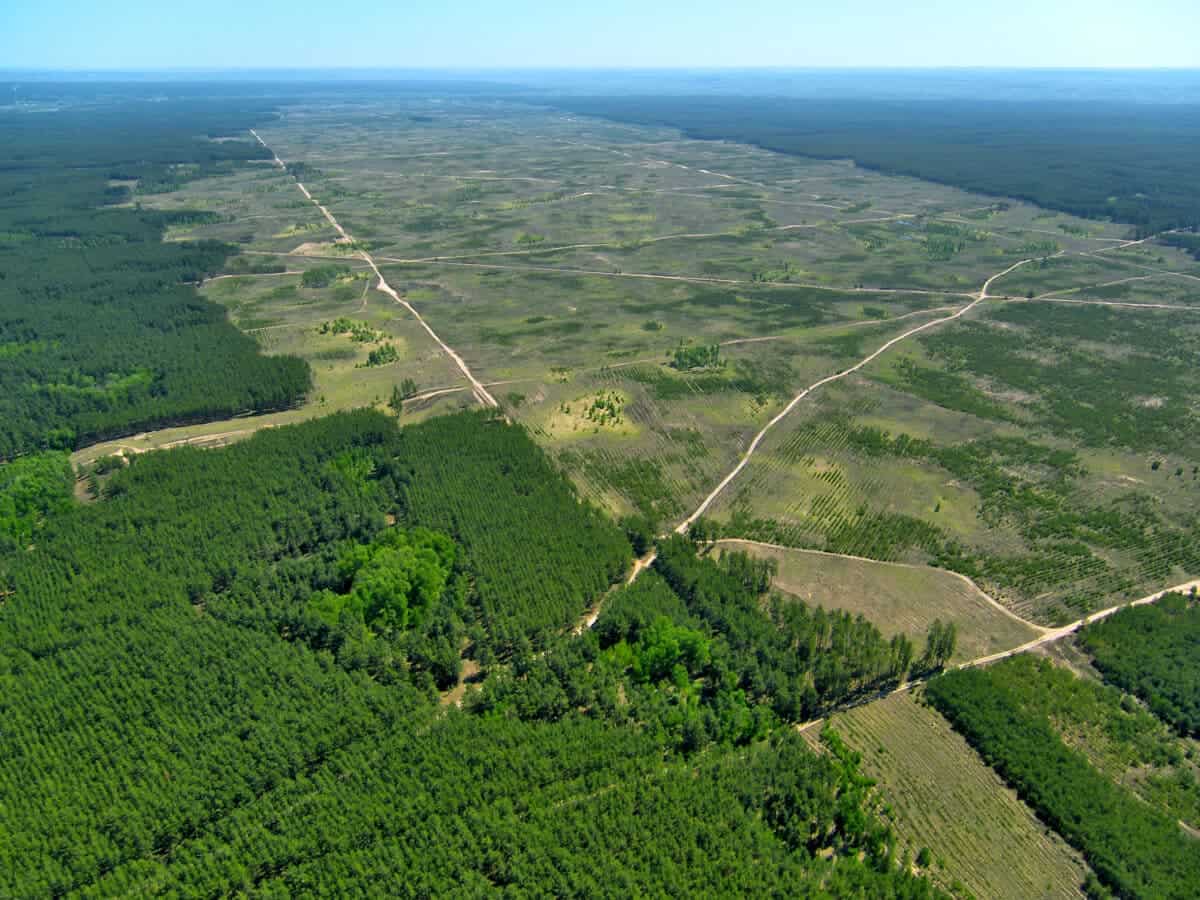
Primarily, sloths face dangers when they descend to the ground, usually to defecate. Luckily though, their slow metabolism and arboreal lifestyle keep them safe from most dangers, including large snakes like anacondas.
Contrary to popular belief, the biggest threat to sloths is not predatory animals but habitat destruction. In other words, we humans are their biggest enemy. Deforestation and urbanization continue to significantly reduced their natural habitat, leading to a decline in sloth populations.
Is the Sloth Oblivious or Just Foolish?
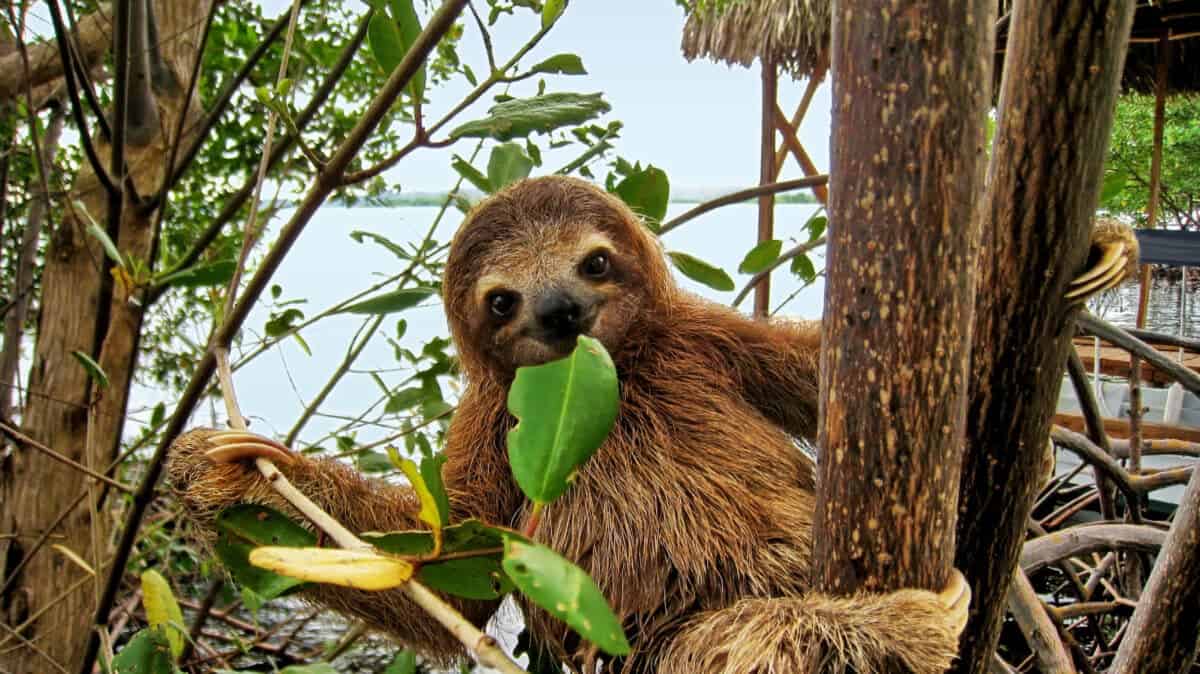
Labeling the sloth’s behavior as either oblivious or foolish might be an oversimplification of its instinctual actions.
Generally, a sloth’s slow movements are a defense mechanism, making them less detectable to predators. In this instance, the sloth might have been unaware of the anaconda’s presence until it was too late to change course. Alternatively, the sloth perceived the snake as a non-threat, possibly due to the anaconda’s lack of movement or aggressive posture, and decided to proceed.
Why Didn’t the Snake Attack?
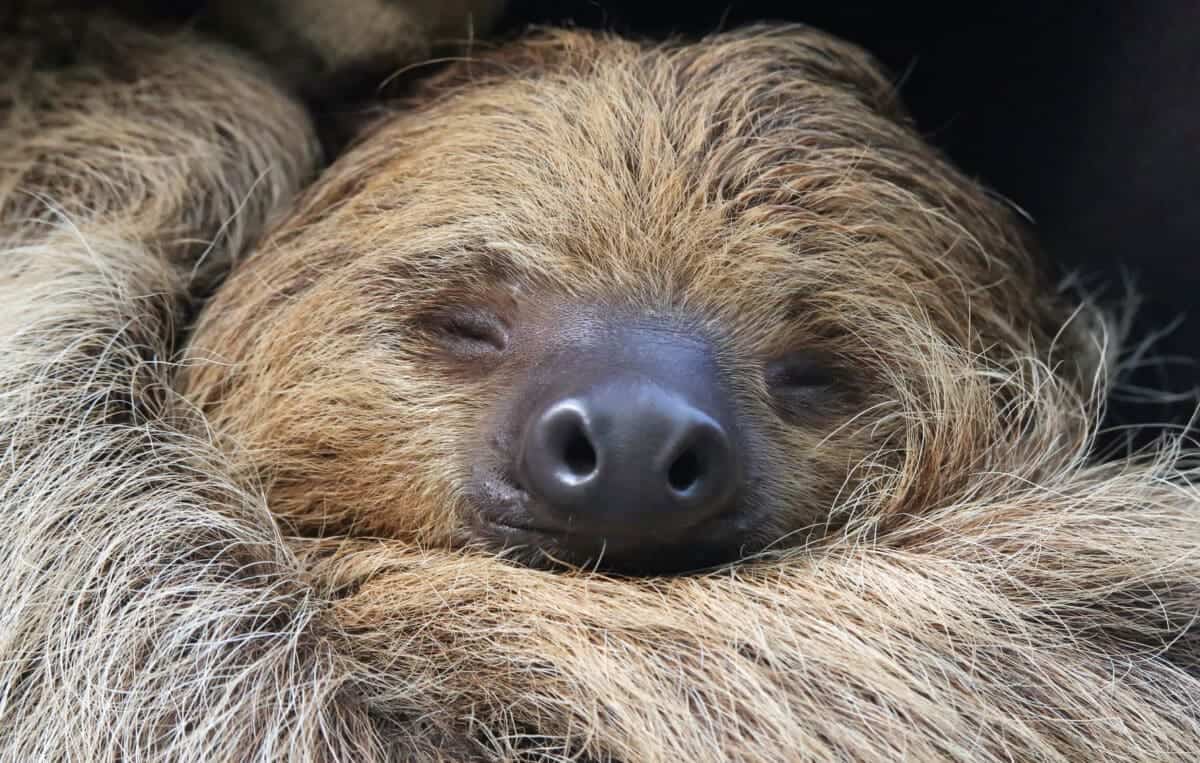
The anaconda’s decision not to attack is equally intriguing. Anacondas, as ambush predators, rely on the element of surprise.
In this scenario, the sloth’s slow approach might not have triggered the snake’s predatory response. It’s also possible that the snake was not hungry or had recently had a meal that it was digesting.
Video & Conclusion
It’s been a long time since I saw something as nail-biting as this. Although we can never know whether the sloth was oblivious to the huge snake or simply being a touch foolish. Whatever the case is, I nonetheless applaud this sloth’s bravery!
Thank you for reading this story about the sloth that crawls across an anaconda! To learn more about this slow but adorable creature, take a look at these posts:
- Sloth Mom Extends Hand to Photographer Who Helped Her Baby
- Sloth Becomes Inseparable From Beagle Best Friend
- Best Places to see Sloths
- Octopus Stuck to Diver’s Back and Won’t Come Off - April 25, 2024
- Magpie Bird Is Reunited with Her Dog Best Friend - April 24, 2024
- Dog Saves Another Dog From Drowning in Fish Pond - April 23, 2024

